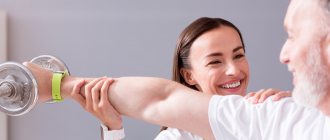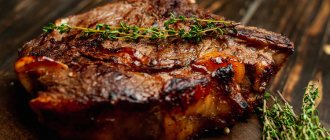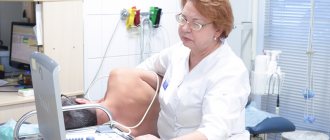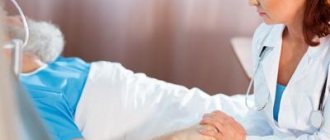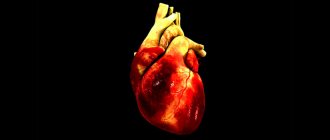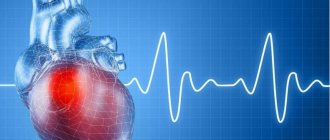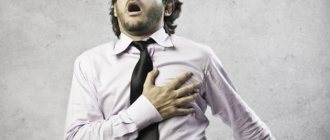until November 30, 2021 First procedure 1000 rub.
(30 minutes) Medical massage is one of the effective physiotherapeutic methods of treatment and recovery. Massage relaxes muscles and tones tissues, improves joint function, and stimulates blood circulation. The procedure prevents lymph stagnation and swelling, fights pain, and has a calming and relaxing effect.
How did massage appear and why was the attitude towards it controversial?
The word “massage” comes from the French language (masser - to rub). Moreover, the procedure itself was known even to primitive peoples. The first official evidence of massage techniques appeared in Ancient China, in the 3rd millennium BC. Even then, there were medical and physical education educational institutions, where one of the disciplines was massage.
During the Middle Ages, massage therapists were subjected to severe persecution. The Holy Inquisition was convinced that pain relief and healing through the touch of hands was a clear sign of the devil. Witch doctors were declared sorcerers and witches and burned at the stake. Only 300 years ago in Europe the works of scientists about massage and its healing properties began to appear again.
Fortunately, in our country there has never been a bias towards the procedure, and therefore the methodology has developed over many centuries. In Ancient Rus', massage was revered both as a full-fledged healing tool and as a pleasant element when going to the bathhouse (rubbing, patting with a broom). Nowadays, massage is recommended for the prevention and treatment of many diseases, and along with manual methods, modern hardware technologies are appearing.
A massage therapist in a clinic, a massage therapist in a beauty salon, a chiropractor: what’s the difference?
The massage therapist works on the patient's body with his hands, kneading, patting, stroking, rubbing, shaking, pressing, rolling and vibrating. Unlike a chiropractor, he does not have the right to prescribe treatment or realign joints and vertebrae.
A “manual specialist” is a doctor who graduated from a medical school, residency or internship in the specialty “neurologist” or “traumatologist-orthopedist”. In addition, such a doctor has additionally completed a specialized retraining program in manual therapy.
A massage therapist in a medical clinic is a specialist with a secondary medical education in the specialties “therapeutic physical education”, “medical massage”, “nursing”, “physical rehabilitation and recreation”, “massage nurse”. An option with retraining is possible, but only if you have a secondary medical education. Such a specialist has the right to conduct medical, sports, myofascial and other types of massage. Without confirmed qualifications, a person will not be able to perform such procedures and get a job in a clinic. If this norm is violated, then according to Article 69, Article 323 of the Federal Law, the person bears criminal liability.
A massage therapist in a beauty salon, as a rule, does not have a medical education and provides non-medical massage (cosmetological, relaxing). The theoretical and practical knowledge base of a specialist is limited to short-term courses (53-72 academic hours). In this case, the quality of services is practically not confirmed by anything other than the reputation of the salon.
Why go for a medical massage?
If you experience a feeling of muscle tension and pain in the back, neck, limbs, if you have severe physical and psychological stress, if you notice poor posture - all this is a reason to think about a massage course. The procedures will also be useful during rehabilitation after injuries, problems with the gastrointestinal tract, respiratory diseases, a general decrease in immunity and increased fatigue.
Before enrolling in a medical massage course, you must consult with your doctor. The specialist will determine the required number of sessions (usually 10-15 procedures) and draw up an optimal schedule of procedures. For some diseases, sessions should be daily, for others - with an interval of 2-3 days. The doctor draws up a plan based on your medical history, age, condition, and you must follow the recommendations, because otherwise you can harm yourself.
Remember that massage is not a magic pill. One session is not enough to get rid of any ailments, even if you go to see a highly qualified specialist. It is not advisable to interrupt the course, because in this case it is almost impossible to achieve the desired effect.
Positive effect
Mechanical and reflex effects on organs and tissues have long been a natural remedy that has a beneficial effect on the entire body. Thanks to massage procedures, a person is filled with new strength and energy, the body is cleansed and rejuvenated. However, the main positive effect of medical massage is that it is a fairly effective therapeutic method that allows you to fight various diseases.
Classic medical massage allows you to achieve the following results:
- normalize lymph flow, increase blood flow to internal organs, improve blood circulation;
- improve blood quality;
- increase immunity;
- strengthen ligaments, relax muscles, eliminate swelling;
- reduce various pains;
- prevent disturbances in the activity of the sympathetic nervous system;
- speed up metabolic processes;
- increase skin sensitivity, improve the performance of the skin's excretory system;
- increase skin elasticity and firmness;
- cleanse the epidermis of dead cells;
- strengthen your back muscles;
- rejuvenate the skin and the entire body;
- relieve fatigue and eliminate the effects of stressful conditions;
- normalize the psycho-emotional state;
- cleanse the body of toxins;
- calm or excite the nervous system;
- reduce the patient’s body weight;
- correct your figure and eliminate the appearance of cellulite.
All of the above advantages of this method, which help improve human health, are the answer to the question: is massage a medical service or not? The pronounced therapeutic effect of the massage procedure leaves no doubt that massage refers specifically to therapeutic methods.
Indications for medical massage
The procedures will help in getting rid of many ailments: from obesity to flat feet. Medical massage is recommended for all types of injuries to the musculoskeletal system (fractures, dislocations and sprains of joints, muscle spasms, all kinds of sprains and overloads of muscles and joints, torsion or rupture of ligaments). The course brings relief with:
- degenerative diseases of the spine and other dysfunctional diseases of the skeletal system;
- arthritis and tendonitis;
- diseases associated with respiratory failure;
- rehabilitation after muscle paralysis and peripheral nerve damage;
- neuroses and stress;
- osteochondrosis;
- stomach ulcers and gastritis;
- atherosclerosis;
- neuralgia;
- coronary disease;
- diabetes, etc.
The type of massage is selected depending on the pathology. The impact can be both general and local (aimed at restoring a specific function).
Contraindications
Massage procedures are contraindicated in the following cases:
- during feverish conditions;
- patients who have a tendency to develop bleeding;
- persons with impaired integrity and infectious lesions of the skin;
- for thrombosis, thrombophlebitis, varicose veins of the second and higher stages;
- with an aneurysm;
- with severe vascular spasm, damage to the vascular walls;
- with severe atherosclerosis;
- for blood diseases;
- cancer patients;
- with damage to the lymph nodes;
- persons with mental pathologies;
- for urolithiasis and cholelithiasis (if a massage of the lower back and abdomen is planned);
- patients with active tuberculosis, AIDS, scurvy, osteomyelitis.
Contraindications for medical massage
Massage cannot be performed in some cases. Namely:
- skin diseases;
- immediately after a bone fracture and tendon rupture;
- increased body temperature;
- tumor diseases;
- phlebeurysm;
- hemorrhage, hemophilia, hemorrhagic diathesis;
- developed atherosclerosis;
- advanced stages of hypertension;
- infectious diseases.
Some patients feel weak after the session, observe redness of the skin and make the erroneous conclusion that massage is contraindicated for them. This reaction is just a side effect, which manifests itself less intensely in some and more intensely in others. But after the procedure there should not be a feeling of total “overwhelm” and complete powerlessness, dizziness, or a sharp rise in temperature. Such a response from the body indicates the incompetence of the massage therapist.
Massotherapy
Therapeutic massage is an effective method of treating various injuries and diseases. Massage therapists at the Yusupov Hospital perform it according to an approved method, taking into account indications and contraindications. Therapeutic massage can be general and local. When conducting therapeutic massage, there are 5 main techniques:
- stroking;
- squeezing;
- trituration;
- kneading;
- vibration.
Massage therapists also use active-passive movements.
Rehabilitation massage is used for functional treatment and restoration of the patient’s physical performance after surgical interventions. It is carried out in combination with physical therapy and mechanotherapy. For colds, cupping massage is first performed, later percussion massage is performed in combination with inhalations, and a warming massage is performed at night. Back massage is effective for pneumonia.
Then the massage therapist performs an oblique chest massage: his right hand is in the patient’s axillary region, and his left hand is on the inferolateral surface of the chest. At the height of exhalation, the chest is compressed. Then the position of the hands changes. Such techniques are carried out for 2-3 minutes.
To prevent the patient from holding his breath, he is asked to inhale while his hands slide to the sternum. Towards the end of exhalation, the chest is compressed, thereby causing increased breathing. Oblique massage helps prevent congestive pneumonia in patients after a stroke. In Moscow it is made at home.
What to look for when choosing a massage therapist
Incompetent massage therapists are a big problem in the medical world. Such specialists have harmed the health of many people. There are several signs that this is not a medical professional who is trying to help, but a person aimed solely at commercial gain.
You should be wary if the massage therapist:
- gives a 100% guarantee of complete recovery;
- says that there are no contraindications to massage;
- promises, using the author’s method, to remove all toxins and waste from the body in 3 sessions, get rid of 10 kg of excess weight with one touch, etc.;
- insists on replacing the treatment prescribed by the doctor with dietary supplements and other magic pills;
- names the exact duration of the course in absentia.
Remember that medical massage is a fairly serious physiotherapeutic procedure in which such negligence is unacceptable. Do not risk your health, contact a medical institution, and not dubious specialists.
Our Clinic has professionals with many years of experience and medical education. They are well versed in anatomy, neurology and other fields, which help them form a correct idea of what processes occur in your body. Your health is in good hands here.
How to prepare for a session
To achieve maximum healing effect and feel comfortable, it is recommended to follow several rules.
Namely:
- take care of hygiene;
- do not wear jewelry that may interfere with the specialist’s manipulations;
- give up perfume;
- eat no later than 1 hour before the procedure;
- Avoid epilation of legs and other areas on the eve of the procedure - massage oil can get into micro-wounds and provoke inflammation;
- if exposure is expected in the abdominal area, you need to eat no later than 3 hours before the procedure.
During the session, you need to relax as much as possible so that the massage therapist can work on the skin and muscles without encountering muscle resistance. After completing the procedure, you should lie quietly for several minutes.
What methods of influence will the massage therapist use?
Medical massage includes many techniques and methods. The nature of the effect depends on the patient's medical history and condition. For example, procedures after an injury can be combined with cold exposure - this helps relieve swelling and increase joint mobility. However, several types of medical massage can be distinguished:
- Classic . Performed using oil, it is based on the use of basic massage techniques. The nature of the movements is stroking and rubbing.
- Spot . The specialist acts on certain points with his fingers or elbows. By pressing on a bioactive point in the body, certain centers responsible for pain and regeneration processes are activated.
- Periosteal . Necessary for diseases of the musculoskeletal system, which are closely related to pathologies of internal organs. Massage improves lymph flow and blood circulation, helps relieve pain.
- Connective tissue . The massage is aimed at improving the functioning of the ligaments. Due to this, you can get rid of pain, reduce swelling and stiffness, and restore joint mobility.
- Reflex . The technique is based on the idea that the human body is a complex self-healing system in which all elements are closely connected. Exposure to certain areas gives a response, and on the basis of this a conclusion is made about a possible dysfunction of the organ. With the right technique, neurological diseases and various diseases of the internal organs can be cured. The methodology of this type of massage is considered one of the most difficult because it requires specific knowledge from the field of neurology.
- Hardware . Based on the use of special equipment. The impact can be due to ultrasound, infrared radiation, weak electric shocks, etc.
The type of massage is selected individually; other physiotherapeutic procedures can be prescribed in combination.
Techniques and methods of massage for diseases of the cardiovascular system
Hypertonic disease
Before a massage session, it is necessary to measure your blood pressure: you can start procedures only when it is normal. The massage is performed in a sitting position, and begins in the collar area, first with light stroking, then by rubbing the corners of the shoulder blades and shoulder girdles, and ends with a massage of the neck in front.
Hypotonic disease
The main feature of massage procedures for hypotension is that they are performed energetically, using vibration or shock techniques. They are carried out with the patient lying on his stomach, and the main areas of influence are the sacrum and the area of the iliac bones. In addition, in case of hypotension, abdominal massage, carried out by longitudinal and transverse kneading, rolling and sawing, has a very good effect.
Heart disease
For heart defects, the main areas to be massaged are the chest, back, upper and lower extremities. As for the technique, it largely depends on the clinical picture of the disease. For example, in case of circulatory insufficiency of degrees I and II, the main objects of influence of massage therapists are the limbs, and if blood circulation is normal, then the left scapular area is massaged, both from the chest and from the back.
Obliterating endarteritis
For patients suffering from this disease, massage is performed in areas such as the pelvic region, lower back and back. If the disease is diagnosed in the first or second stages, then the procedures are performed with the patient lying on his back or stomach. The session begins with stroking the back or abdomen up to the head, continues with squeezes and double ring kneading. The lower limbs are also massaged, which must be bent at the knees during the procedure. For this, concentric and spiral stroking is used.
Vegetovascular dystonia
For patients suffering from this disease, procedures are best performed in the morning. The best position for this is lying on your stomach. The effects begin by stroking the neck and back of the head from the crown down, and continue with intensive rubbing of the cervical spine in circular and spiral movements.
Recommendations for improving the effect after massage
Ideally, after the session you can come home and rest for 30-40 minutes, relax. You can take a warm bath with sea salt or natural essential oils. It is also recommended to increase the amount of fluid consumed and eat right.
Diagnostics before the first massage session is a mandatory procedure. It is performed with the goal of not harming and helping the patient.
Extracts from the medical record, photographs and doctor’s reports, and a referral for a massage do not replace the examination of the patient by the massage therapist himself.
If there are any doubts on the part of the massage therapist, before the session, the specialist can invite a doctor to the office for consultation, who is always available in our clinic. An additional completely free consultation with a doctor is a concern for your health and an indicator of our responsible attitude.
Remember: a specialist at our clinic has the right to refuse you a massage session if he considers that the procedure may harm you.
Using various techniques, massage therapists help the patient get rid of various health problems. These include: dysfunction of the cardiovascular system, joint diseases, muscle dysfunction, consequences of fractures, obesity and much more.
In some cases, one massage is enough to combat the disease, but often massage is an integral part of general medical therapy.
Massage for chronic heart failure
General recommendations and restrictions when performing massage
Chronic heart failure (CHF) can become a complication of many heart diseases. Most often it occurs as a result of ischemic disease: due to the long-term existence of angina pectoris, after myocardial infarction, etc. CHF is an irreversible disease. It means that the heart muscle has undergone changes, during which the heart has ceased to fully pump blood. Because of this, stagnation occurs, edema forms, fluid accumulates in body cavities, patients begin to notice shortness of breath and reduced tolerance to physical activity. It is impossible to influence all these factors, much less restore the previous state of the myocardium in chronic heart failure. Once such a diagnosis has been made, it can no longer be removed. However, there are many ways that can help influence the pathogenesis of the disease. This includes drug therapy, physical therapy and various physiotherapeutic techniques, including massage. With their correct and combined use, it is possible to achieve a significant regression of symptoms, and in patients with a mild course of the disease, even their complete disappearance.
The possibilities of massage for CHF are limited, but quite significant. Thus, with the help of classical procedures, it is possible to expand the capillary network, stabilize vascular tone, normalize blood pressure and reduce the severity of shortness of breath and edema, “expelling” blood from the venous bed. Chinese acupressure has a slightly different effect. Its use allows you to increase the power of the heart, reduce oxygen starvation of organs and normalize microcirculation. However, the main point of its application is the main disease process underlying ischemic changes in the heart - atherosclerosis. Chinese doctors believed that using this technique would help slow down the rate of development of the disease.
Chronic heart failure has a different course, and depending on this, massage for this disease may be indicated or contraindicated. Its implementation is permitted in patients who suffer from stage I or II of CHF. These include those patients whose symptoms either appear only with increased load, or exist constantly, but in a mild form. Only patients whose disease exists in a compensated form can be admitted to physiotherapy. They should feel fairly well and show no signs of blood congestion. If a person regularly taking medications continues to have shortness of breath and swelling in the legs, he should not undergo such treatment procedures. It is necessary to review the drug treatment plan and achieve improvement in the condition. Massage is allowed only when the patient’s well-being has stabilized. Otherwise, it can lead to overload of the heart muscle and aggravation of pathological changes.
Before prescribing a massage, patients must be fully examined. Sometimes it happens that under the guise of exacerbation (decompensation) of chronic heart failure, an acute process, such as a heart attack, is hidden. It can occur in a painless form, which is often found, for example, in patients with diabetes. If in such a case you send a person to a massage course, this can significantly affect his health.
CHF is a complication of heart disease. The term “complication” means that a patient with such a diagnosis necessarily has an underlying pathology - stable or unstable angina, previous heart attack, arterial hypertension. Therefore, if any of the underlying diseases is included in the list of contraindications for massage, it should be abandoned. Such contraindications are acute heart attack and post-infarction period, unstable angina, acute coronary syndrome, angina pectoris of III-IV functional class (when chest pain occurs with minimal exertion and at rest), severe arterial hypertension, hypertensive crises and post-crisis state.
Methods of classical massage
For chronic heart failure, massage the back, arms and legs.
First, a series of techniques are performed on the back. The first thing to do is stroking in the direction from bottom to top. The movements are made with the base of the palms, the arms are moved in a straight line. Along the spine, the stroking is plane, on the sides - grasping. Then the massage therapist performs rubbing. This technique involves the pads of the index, middle, ring and little fingers. Repeat stroking over the entire area of the back.
After this, individual sections are worked on. On the area located along the spinal column, first deep stroking is carried out with the backs of bent fingers, then one of the types of rubbing. In this area, the most convenient type is sawing. It is replaced by kneading and vibration. Vibration should not be carried out too intensely in the area between the shoulder blades. Of its varieties, chopping with the edges of the palms and patting are the most preferable. Finally, stroking is carried out.
In a similar way, techniques are performed in the projection of the trapezius muscles and in the posterolateral part of the chest, where the latissimus dorsi muscles are located.
If the patient has a mild form of the disease (stage I), tonic techniques can be administered in doses over the heart area. This may be gentle chopping and patting over the anterior surface of the chest or in the interscapular space. In addition, such patients are allowed to perform squeezing movements on the chest, squeezing it from the sides between the palms.
If chronic heart failure has existed for a long time and is accompanied by dilatation of the heart cavities, it is recommended to perform stimulation at a point located in the lower part of the neck. An index finger or thumb is placed over the central process of the lower cervical vertebra (it is noticeable as a small protrusion) and small-amplitude vibration is applied.
After exposure on the back, they move on to the upper and then lower limbs. All the techniques that are performed there are aimed at draining blood from the peripheral veins. Stroking, rubbing, squeezing, kneading can be used. Movements should not be intermittent, but extended, and carried out in certain directions. First, massage the hand (foot), then the forearm (shin) and lastly the shoulder (thigh). The massage therapist's hands move from bottom to top, from fingers to body.
In patients with chronic heart failure, after starting a course of massage, protein may be detected in urine tests. In this case, you should reduce the intensity of the massage and avoid performing deep techniques in the lumbar region.
The total duration of the massage procedure is about 20 minutes. If well tolerated, taking into account the large massage area, the duration of the session can be increased to 30 minutes. Treatment is carried out in a course of 20-30 procedures. They are performed every day without breaks. If the slightest signs of deterioration in the patient’s condition appear, massage is refused.
Acupressure technique
Stimulation of all points is carried out using low-intensity, calming techniques. Typically, pressing is done with elements of rotation. At each point the effect is performed for about 3 minutes. All active areas, with the exception of the last one, are paired and are located on both sides of the body.
The first two are on the upper limb. Point 1 lies in the area of the ulnar fossa, in its outer part, on the side of the hand where the first finger of the hand is located. The impact must be carried out first on the right hand, and then on the opposite. The patient should sit with his hands resting freely on his knees. The back of the hand “looks” upward while massaging this point.
Point 2 is located below. It can be found on the back of the hand between the first two metacarpal bones (in the space separating the thumb and index finger), approximately in the middle of this area. During its stimulation, the massage therapist’s finger should rest against the second metacarpal bone. The massage is performed first on the right side.
Point 3 is localized on the lower leg. It is determined 3 cun down from the middle of the lower edge of the kneecap and 1 cun outward, to the side where the little finger is located. Unlike the already mentioned areas, here the massage is performed on both sides at once. The sitting patient's legs should be straight.
Point 4, also located on the leg, is located on the inner surface of the lower leg. Its location is 3 cun from the inner ankle towards the knee joint. The exposure is carried out for 3 minutes, simultaneously on both legs.
The 5th point can be found on the back, at the level of the gap separating the IV and V vertebrae of the thoracic region. From this zone you should measure 3 cun to the right and left. Here is the desired point, which must be stimulated on both sides at once with the pads of the thumbs. In this case, the person must lie down.
Point 6 lies above the middle of the spines of the shoulder blades on the right and left. The spines of the scapulae, which have an almost horizontal direction, are easily palpable through the skin. Massage of symmetrical areas is carried out at the same time.
To move on to the next longing massage, you need to return to the lower leg again, stepping back 3 cun towards the knee from the level of the outer ankle. To perform techniques at this point, the patient should sit down again.
Points 8 and 9 are located on the stomach; in order to massage them, the patient must be placed on his back. The 8th lies on both sides of the navel, on each side of it at a distance equal to 4 tsuns. During exposure to it, tension of the abdominal muscles is unacceptable. Point 9 is located along the same vertical line, but much lower. This area is located just above the pubis, and to find it you need to measure 4 cun from the top of the pubic bones.
Point 10 is located in the center of the bend of the wrist, on the palm side. Techniques are performed first on the right. 11th is very close. It is easy to determine by stepping back from the previous one by 1 cun towards the ulnar fossa. The impact is carried out according to the same rules.
Point 12 lies even higher, on the shoulder. If a person bends his arm slightly at the elbow, the biceps muscle (biceps) becomes easily visible through the skin. The active area is located at its inner edge (with the arm lowered, in the part closer to the body). Location level: 3 cun above the cubital fossa. The massage is carried out in the same way as for the previous two points.
Next, the impact is applied to point 13. It is also symmetrical, both areas are massaged at the same time. The patient should lie on his stomach. This acupuncture zone lies not far from the 5th point, only the 5th is located between the IV and V thoracic vertebrae, and this one is one vertebra below. In addition, it is located closer to the spine, 1.5 cun from the midline.
Points 14 and 15 are determined at the lowest level. The 14th is located on the inner surface of the foot, in the highest part of its arch, in front of and below the level of the inner ankle. The next one lies behind her, just under her inner ankle.
Finally, the last active point is single and is stimulated not in the same way as the others, but by a tonic method. It can be rubbed and deeply pressed for 30 s - 1 min. This point is located between the central processes of the II and III lumbar vertebrae.
The course of treatment for chronic heart failure should be long, up to a month, and massage sessions should be performed daily. The courses are repeated 3-4 times a year, two of them must be completed in the off-season.
- Rate the material
